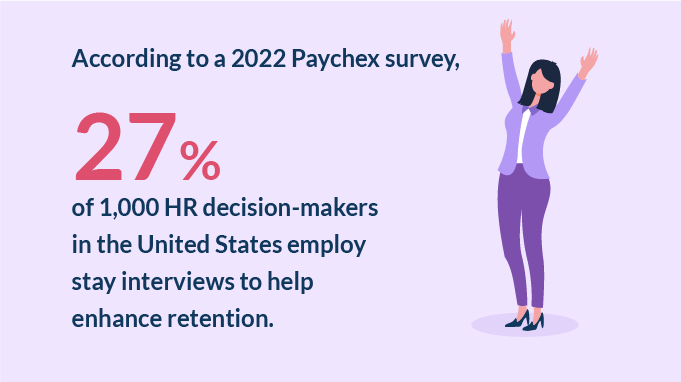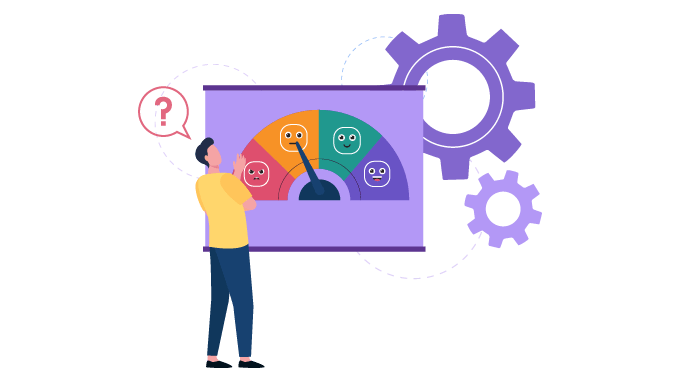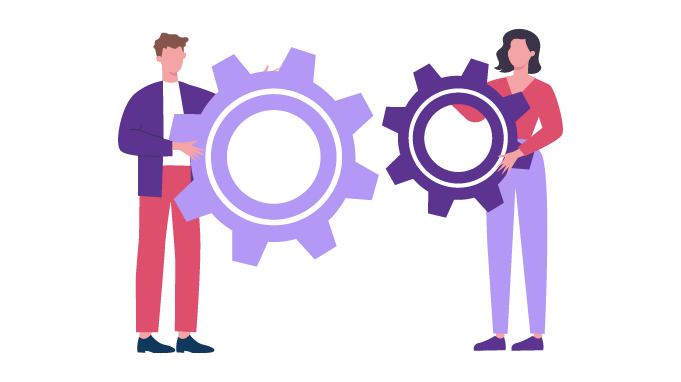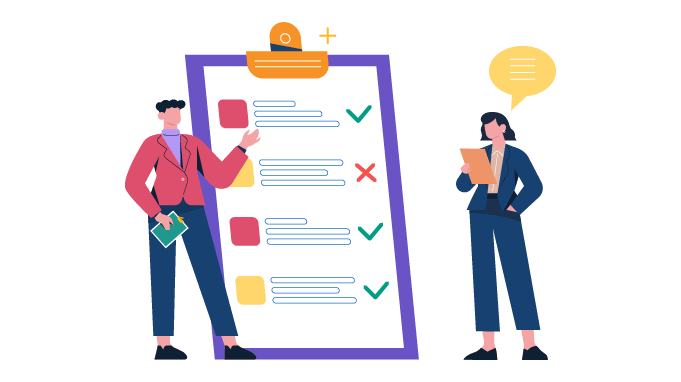Retain and Thrive: The Stay Interview Blueprint for Success
Stay interviews have become a key strategy for organizations in a world where talent retention is as crucial as talent acquisition.
The proactive approach of these interviews aims to nurture a loyal and engaged workforce. Moreover, it is designed to understand what motivates and satisfies employees while identifying and addressing potential barriers that compel employees to leave.
This article explores stay interviews, their benefits, and how to implement them for open communication in the workplace.
What is a Stay Interview?

A stay interview is a one-on-one conversation between a manager and a valued employee. Its primary goal is to discover what motivates employees to stay with the organization and what parts should be improved.
Stay interviews aim to understand the employee's current attitude and forecast future satisfaction. Doing so helps in having a clear picture of the overall engagement levels.
By engaging in these interviews, companies show a commitment to their employees' happiness and career growth. This lays the groundwork for a more dynamic, satisfying, and productive work environment.
Recommended Read: The Ultimate Guide On Employee Exit Interviews in 2023
The Significance of Stay Interviews

Before implementing a stay interview strategy, it is critical to understand its significance. Knowing how relevant the approach is will help you leverage it better. Let us look at a few of them-
- Understanding Employee Sentiment
Stay Interviews are a crucial tool in gauging the pulse of the workforce. They go beyond the surface to understand employees' real feelings, motivations, and concerns.
Unlike annual reviews, these interviews provide a safe space for employees to express themselves. These offer insights into the day-to-day experiences that shape their workplace satisfaction.
This level of understanding is invaluable for managers seeking to create a positive work environment. It's not about identifying problems but also about recognizing and reinforcing the positive aspects that motivate employees.
- Statistics on Employee Turnover and the Cost Benefits of Retention
Employee turnover is more than just an operational hurdle; it's a significant financial burden. And to tackle that, organizations have been resorting to stay interviews. According to a 2022 Paychex survey, 27% of 1,000 HR decision-makers in the United States employ stay interviews to help enhance retention. They are more likely to be used by larger organizations than by smaller businesses.

Stay Interviews are a low-cost technique for retaining employees. These employees identifies and addresses concerns that could lead to turnover.
They assist workplaces in understanding what motivates employee satisfaction and loyalty. Thus, allowing them to make informed decisions to improve retention.
This proactive approach saves costs associated with hiring and training new employees in the long run.
Read More: High Employee Turnover: 7 Major Reasons (+How To Solve Them)
- How Stay Interviews Can Identify Potential Issues Before They Lead to Resignations
One of the most important parts of stay interviews is their capacity to expect concerns that may lead to employee resignations.
By conducting these talks, managers can find underlying problems. It can include things like work-life balance, professional progression, or company culture.
This early detection allows for timely intervention. Solutions can range from simple adjustments in work processes to more significant changes in management practices or career development paths.
Addressing these issues helps keep valuable employees and sends a strong message that the management is attentive and responsive.
Benefits of Conducting Stay Interviews
1. Encouraging Open Communication and Building Trust

Stay interviews serve as a proactive approach to engaging employees in honest dialogue, which can be more effective than annual reviews. By asking specific, open-ended questions about their work experience, you create a safe space for employees.
This openness can uncover underlying issues that might not surface in more formal settings. It’s crucial to act on feedback to show that their opinions are valued and considered, thereby fostering trust.
2. Gaining Actionable Insights into the Working Environment and Culture

Stay interviews can be instrumental in understanding the real pulse of the organization's culture from an employee's perspective. It allows for a deep dive into what employees-
- Value most in their work environment
- Percieve of the company culture
- These insights provide valuable input for shaping workplace strategies.
These strategies can align with employee expectations and organizational goals.
3. Identifying Opportunities for Professional Development and Career Progression

Employees often have aspirations and skills that may not be visible in their current roles. Stay interviews are an opportunity to explore these areas. Talking about career goals and opportunities can help employees and organizations work together. This approach helps plan careers and keeps talented individuals by showing interest in their growth.
Read More: The Ultimate Guide To Employee Development In 2023
4. Proactively Addressing Concerns and Improving Job Satisfaction

Stay interviews are a way to find out and solve employee concerns before they become reasons to leave. It's not only about fixing problems now, but also about understanding what makes people happy at work. This includes having a good balance between work and personal life, feeling appreciated, and sharing the same values as the company. Addressing these concerns can improve job satisfaction and reduce turnover.
5. Strengthening Manager-Employee Relationships

Stay interviews present a critical opportunity for managers to strengthen employee relationships. These interviews focus on employees' personal experiences, aspirations, and feelings about the organization.
This shift allows for a deeper level of engagement, where employees feel heard and understood. Hence, fostering a sense of value and belonging.
During these discussions, managers learn insights to give personalized support and adjust their management style. Managers show commitment to their team's well-being and career growth by taking actions post-interview.
These actions can include professional development opportunities, adjusting work conditions, or addressing organizational issues.
Stay interviews are instrumental in building a culture of trust and openness. This approach strengthens manager-employee relationships and cultivates a productive workforce. Hence, benefiting the entire organization.
Preparing for a Stay Interview

Before conducting a stay interview, doing the right preparation is critical. Without prior preparation, it becomes difficult to conduct such interviews and it does not give you the desired results. Below is a list of the things you should do to prepare for such interviews.
1. Identifying the Right Candidates for Stay Interviews

Focus on employees who are critical to the team's success and those who are displaying indications of disengagement. This will help you optimize the stay interviews. Look for people that have vital talents, have great potential, or are in roles that are critical to the organization's success. Recognizing these major people and comprehending their distinct contributions and potential issues is critical.
Select the employees who are your top performers and set a benchmark.
2. Timing: Choosing the Appropriate Stage in an Employee's Lifecycle

You cannot overstate the importance of timing. Conduct stay interviews during important times of an employee, like after projects or during transitions, to support employees. This aids in the collection of genuine insights and issues related to their current experiences and future objectives within the organization.
Read More: 6 Stages of Employee Lifecycle That You Need to Know
3. Setting Clear Objectives for What the Interview Should Accomplish

Establish specific goals before beginning a stay interview. These interviews should try to learn-
- What inspires the person.
- To identify any obstacles or barriers they experience.
- To gain information about their career goals and job happiness.
This clarity will direct the discussion, ensuring that it is productive and focused on concrete goals.
4. Creating a Comfortable and Confidential Environment for Candid Discussions

It is critical to create a psychologically safe work environment in which employees feel comfortable talking openly. Assure them that their input is valued and that it will be used productively.
Conduct these interviews in a quiet, non-threatening atmosphere. Approach the conversation with empathy and openness. This emphasizes that the goal is to assist their professional growth and fulfillment.
Crafting the Right Questions

You have prepared yourself with all the critical basics of stay interviews but are your questions ready yet for the interview? If not, then your preparation is still in process.
Now how do you come up with the right questions? If that is something you need help with then here is the start you need. Below is a list must remember while crafting your interview questions.
1. Open-ended vs. Targeted Questions: Striking the Right Balance

Combine open-ended questions to gather wide, thoughtful responses with targeted inquiries. This will help you get specific insights. Open-ended inquiries uncover personal reflections and anecdotes. On the other hand focused ones reveal specific areas of concern or interest. This balance ensures a thorough understanding of the employee's experience and viewpoint.
2. Examples of Effective Stay Interview Questions

Successful questions include: "What motivates you to come to work every day?", "Can you describe a situation where you felt accomplished here?", "What might tempt you to leave?", as well as "How can we support your career goals?".
These questions probe an employee's motives, satisfactions, probable reasons for leaving, and objectives. Hence, providing useful insights for retention tactics.
3. Avoiding Questions That Could Lead to Disengagement or Discomfort

Avoid queries that may make employees defensive or uneasy. Such as those that imply discontent with their existing role or performance. Cut personal or intrusive questions and instead concentrate on their work experience and goals. Throughout the interview, this technique maintains a positive, constructive tone.
4. Adapting Questions to Fit Different Employee Roles and Levels

Customize your questions to reflect the unique context and duties of various jobs and levels within the business. Focus on learning and growth experiences for entry-level employees. And leadership experiences and long-term career vision for senior roles. This individualization guarantees that the conversation is relevant and engaging for each person.
15 Questions You Should Ask During a Stay Interview

Here are 15 stay interview questions along with brief explanations of their significance you need to know.
Q1. "What motivates you to come to work each day?"
Significance: This question helps understand what drives the employee, crucial for enhancing job satisfaction and engagement.
Q2. "What aspects of your job do you enjoy the most?"
Significance: Identifies elements of the role that are fulfilling, useful for tailoring future job responsibilities.
Q3. "Are there aspects of your job that you find particularly challenging or unenjoyable?"
Significance: Highlights areas for improvement and potential training or support needs.
Q4. "How do you feel about the work-life balance here?"
Significance: Addresses a key factor in employee satisfaction and retention.
Q5. "Can you describe a recent accomplishment that you're particularly proud of?"
Significance: Offers insights into what the employee values and where they feel most successful.
Q6. "What professional growth opportunities would you like to explore?"
Significance: Helps in aligning the employee’s career aspirations with organizational opportunities.
Q7. "How well do you feel your talents are being utilized?"
Significance: Identifies any underutilization of skills, suggesting areas for role enhancement.
Q8. "What can we do to make your work more rewarding?"
Significance: Directly seeks input on how to improve the employee's job experience.
Q9. "How do you view your career progression here?"
Significance: Reveals the employee's long-term career expectations and current outlook.
Q10. "What might tempt you to leave?"
Significance: Uncovers potential issues that could lead to turnover, providing a chance to address them proactively.
Q11. "How do you feel about the feedback you receive on your work?"
Significance: Indicates how effective and satisfactory the current feedback and recognition systems are.
Q12. "Do you feel your ideas and opinions are valued in the team?"
Significance: Assesses the employee's sense of belonging and value within the team.
Q13. "What can we do to support your health and wellbeing?"
Significance: Shows concern for the employee's overall wellbeing, not just their professional output.
Q14. "How effective are our communication and management practices for you?"
Significance: Evaluates the effectiveness of current management and communication styles.
Q15. "What changes would you suggest to improve our workplace culture?"
Significance: Encourages the employee to share their perspective on cultural improvements, fostering a sense of ownership and belonging.
Best Practices for Conducting Stay Interviews

Conducting these interviews can be tricky and will need the right approach. And to help you with that below are a few pointers that we believe are the best practices for these interviews.
1. Listening Actively and with Empathy

Active listening entails engaging with what the employee says while demonstrating comprehension and empathy. This method yields important ideas and makes employees feel valued and heard. It improves their relationship with the organization.
2. Keeping the Conversation Focused and Productive

Maintain the conversation's focus by keeping it constructive and relevant. A focused interview respects the employee's time and provides practical insights for effective changes.
Never go off-topic as it might nullify the purpose of stay interviews.
3. Documenting Key Points and Actionable Feedback

During the interview, take careful notes on crucial issues and actionable comments. This document is important because it helps you track progress and note down critical details. It transforms conversation into a catalyst for tangible improvements.
4. Following Up on Discussed Topics and Implementing Changes When Possible

Follow-up after an interview indicates attention to the employee's problems and suggestions. Making adjustments based on feedback, when possible, shows the employee's value to the organization. It demonstrates that their voice has a meaningful impact on workplace policies and culture.
5. Training Managers and Supervisors on Effective Interview Techniques

Give managers and supervisors the skills they need to conduct effective stay interviews. Training should cover techniques for asking open-ended inquiries, listening empathically, and dealing with sensitive themes. Skilled interviewers can elicit deeper insights and build a more open, trusting workplace.
After the Stay Interview: Analyzing and Acting on the Data

Analyzing the interview data will improve your organizational culture. Take the necessary steps as per need. But how are you going to do it?
Let’s have a look at it.
1. Compiling and Reviewing Interview Data
To get a thorough picture, merge and review the data collected from stay interviews in a systematic manner. In this stage, you sort and categorize the input into different areas.
These areas include job satisfaction, advancement chances, and workplace climate. This methodical approach makes it easy to examine and derive relevant conclusions.
2. Identifying Trends and Common Themes Across Interviews
Examine the data for repeating themes or trends. This could include frequent areas of satisfaction or unhappiness, specific improvement suggestions, or patterns in employee goals.
Recognizing these patterns is critical for understanding larger challenges or possibilities for positive change.
3. Creating Action Plans Based on Feedback
Create action plans based on the input. This should include concrete, quantifiable strategies to solve recognized problems or capitalize on strengths. These strategies must be realistic, feasible, and time-bound in order to result in substantial changes.
4. Communicating Outcomes and Changes to the Team
Communicate the results of the interviews and any subsequent action plans to the team in a clear and concise manner. This communication should emphasize how employee feedback is used to effect positive change.
It emphasizes the importance of the job interview process and illustrates the organization's dedication to listening to and responding to the needs and recommendations of its employees.
Read more: Key Tips To Improve Workplace Communication
Challenges and Pitfalls to Avoid

1. Ensuring Follow-Through on Promises Made During the Interview
Commit to taking action in response to the feedback. Failure to follow through can breed distrust and lower morale. Create a mechanism for tracking and reviewing the status of promised changes to ensure accountability and to demonstrate a genuine commitment to your team's concerns and suggestions.
2. Avoiding Favoritism or the Perception Thereof
Approach each interview and subsequent actions with fairness and consistency. Favoritism, or its impression, can undermine the process's integrity and lead to dissatisfaction within the team. Ensure that all feedback is properly reviewed, and that any actions taken benefit the team as a whole, not just certain people.
Read more: How To Avoid Favoritism In The Workplace While Rewarding Employees
3. Handling Sensitive Information with the Appropriate Confidentiality
Treat the information shared during stay interviews with utmost confidentiality. Mishandling sensitive information can jeopardize trust and foster a hostile work atmosphere. It is critical to create clear boundaries for how this information is saved, shared, and used while preserving your employees' privacy and trust.
4. Avoiding Complacency – The Need for Continuous Improvement
Stay interviews are not a one-time fix, but rather a part of a long-term commitment to workplace transformation. Avoid growing complacent after making the first modifications. Reassess and update your plans on a regular basis to ensure they remain effective and relevant to your team's changing requirements and expectations.
Measuring the Impact of Stay Interviews

It is essential to keep a check on how the stay interviews are making an impact on the organization. And the best way to do it is by measuring it. Below are a few pointers that you need to consider to measure the interviews.
- Setting Benchmarks and Performance Indicators
Set specific standards and key performance indicators (KPIs) for employee engagement, satisfaction, and retention. These indicators provide a concrete means to assess the effectiveness of stay interviews and enable for data-driven evaluation of their long-term impact.
- Conducting Regular Check-Ins and Pulse Surveys
To evaluate ongoing employee viewpoints, conduct regular check-ins and brief, frequent pulse surveys following stay interviews. This continuous feedback loop aids in tracking the immediate and evolving effects of adopted changes, ensuring that interventions remain relevant and effective.
- Analyzing Turnover Rates and Employee Satisfaction Scores Pre- and Post-Interviews
Compare staff turnover rates and satisfaction levels before and after the implementation of stay interviews. This research shows how interviews improve employee retention and happiness, helping you validate and refine engagement tactics.
Conclusion
You now have the whole picture of everything that revolves around stay interviews. It is upto you how to leverage it and make the best use of it to improve your workplace. Why wait? Come up with your strategies and create a culture that employees will adore in the long run.
FAQs
Q. How does a Stay Interview differ from an Exit Interview?
A. A Stay Interview differs from an exit interview as it is conducted with current employees to understand and address their concerns before they consider leaving the company.
Q. Who should conduct Stay Interviews?
A. Stay Interviews are conducted by a direct supervisor or manager, as they have the most direct relationship with the employee.
Q. How often should Stay Interviews be conducted?
A. Stay Interviews are generally conducted annually or bi-annually, but the frequency can vary based on the organization's needs and resources.
Q. Are Stay Interviews confidential?
A. The confidentiality of Stay Interviews varies by company policy, but generally, they are either fully confidential or shared only in a way that protects the employee's identity.

















